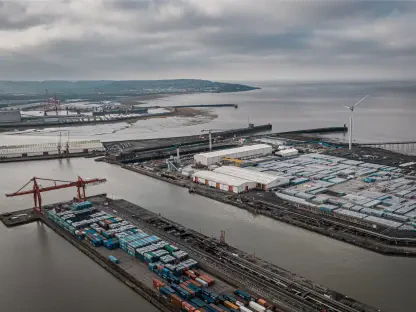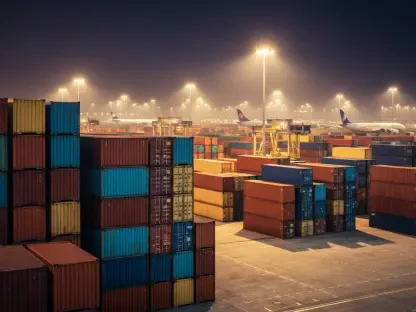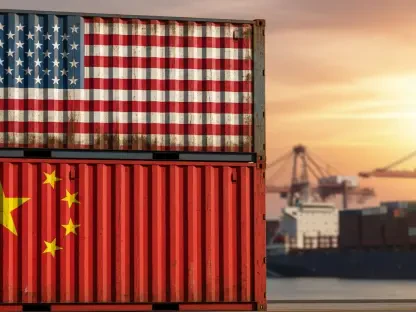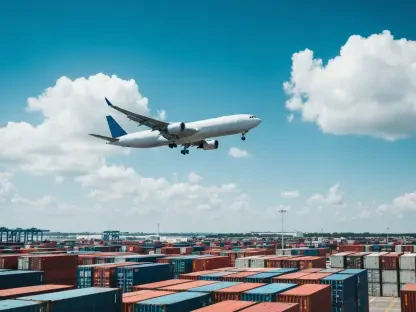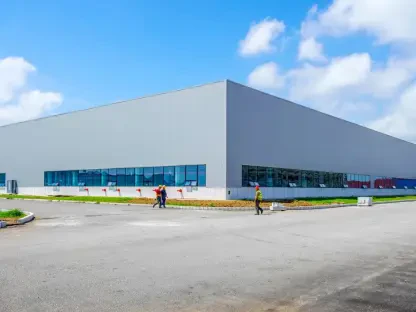Reverse logistics, the process of managing returned, recycled, repaired, or recalled products, has become an integral part of modern business operations. According to Gartner, the global reverse logistics market was valued at over $768 billion in 2023 and is forecasted to surpass $3 trillion roughly within the next decade. While returns are an inevitable part of retail, especially in e-commerce, they are expensive, time-consuming, and logistically complex. However, leveraging automation can sharpen efficiency, cut costs, and boost customer satisfaction.
1. Invest in Comprehensive Automation Solutions
Automation holds considerable potential for enhancing reverse logistics. By automating specific tasks, businesses can save time, reduce waste, and improve customer satisfaction. Innovative goods-to-person technology helps warehouses process and return products to inventory with greater speed and accuracy. This technology minimizes human error by streamlining manual processes, enabling businesses to handle large volumes of returns efficiently. The technology also helps optimize labor utilization, allowing workers to focus on more complex tasks that require human judgment and expertise.
Moreover, automated systems can seamlessly integrate with existing warehouse management systems (WMS) and enterprise resource planning (ERP) systems. This integration ensures that data flows smoothly between different systems, providing real-time visibility into inventory levels and return processing statuses. By investing in comprehensive automation solutions, companies can create a more cohesive and efficient reverse logistics operation. The investment in advanced automation solutions not only mitigates the operational challenges associated with returns but also positions businesses to scale effectively, especially during peak return seasons.
2. Sort and Restock Returns Promptly
Returned items require quick handling to minimize inventory shortages and maximize resale opportunities. An automated system can direct returned products to designated bins immediately, eliminating multiple touchpoints, delays, and human errors. With smart technology, businesses can automatically sort and grade returned products based on condition and resale potential. This intelligent sorting ensures that products are channeled appropriately, whether for restocking, discounting, refurbishment, or recycling. Automated workflow systems further streamline the return-to-stock process, reducing cycle times and enhancing overall efficiency.
Furthermore, prompt sorting and restocking of returns help maintain optimal inventory levels, reducing the risk of stockouts and ensuring that popular items are available for sale without undue delays. Efficient restocking also minimizes the impact of returns on warehouse space, allowing businesses to accommodate more inventory without expanding their physical footprint. By leveraging automation for quick and accurate returns processing, companies can enhance their ability to meet customer demands, ultimately improving customer satisfaction and loyalty. The ability to quickly reintegrate returned items into the supply chain is crucial for maintaining a competitive edge in today’s fast-paced retail environment.
3. Utilize Data and Predictive Analytics
Automation allows businesses to analyze return data in real-time. By tracking reasons for returns, retailers can improve product descriptions, enhance quality control, and address recurring issues. Data-driven insights make returns prevention and workflow optimization more effective, all in an effort to minimize return rates. Predictive analytics can also help businesses anticipate return trends, enabling proactive planning and resource allocation. By understanding the patterns and drivers of returns, companies can implement targeted strategies to reduce the incidence of returns, such as improving product design or refining marketing campaigns.
Moreover, predictive analytics can aid in inventory forecasting, helping businesses adjust their stock levels based on anticipated returns. This level of foresight can prevent overstocking and understocking, ensuring that inventory is managed efficiently throughout the supply chain. By leveraging data and predictive analytics, companies can transform reverse logistics into a strategic asset rather than a cost center. The integration of advanced analytics tools with automated systems further enhances the ability of businesses to derive actionable insights from return data, driving continuous improvement in reverse logistics processes.
4. Simplify Workflow with Integrated Systems
A significant challenge in return processing is inefficiencies caused by disconnected systems. Automated solutions need to integrate seamlessly with other warehouse processes, such as conveyors and autonomous mobile robots (AMRs). These integrated workflows reduce errors, enhance coordination, and improve productivity. By creating a unified system where all components work in harmony, businesses can streamline their operations and reduce manual interventions. Integration also facilitates real-time data sharing across different functions, enabling better decision-making and more efficient allocation of resources.
Additionally, integrated systems can enhance the traceability of returned items, providing complete visibility into their movement and status within the warehouse. This level of transparency helps identify bottlenecks and areas for improvement, ensuring that returns are processed as efficiently as possible. By simplifying workflows through system integration, companies can achieve higher levels of operational efficiency and accuracy. The synergy between various automated components creates a cohesive and responsive reverse logistics operation, capable of adapting to changing demands and reducing the overall complexity of managing returns.
5. Optimize Storage with Vertical Space Utilization
Returns occupy valuable warehouse space, and traditional warehousing systems may struggle with the high space demands of reverse logistics operations. Automated storage and retrieval systems (ASRS) use vertical storage to maximize capacity. Returned products can be stored vertically in compact bins, and restockable items can be prioritized for fast resale. Vertical storage also allows for reduced unnecessary handling and shorter walk times on the floor. This storage approach increases storage density, accelerates processing, and aids operations during peak return seasons while improving space utilization and operational efficiency.
Moreover, ASRS technology enables businesses to manage inventory more effectively by categorizing products based on their demand and return frequency. High-demand items can be placed in easily accessible locations, while less frequently returned products can be stored in higher or lower positions. This strategic placement reduces retrieval times and enhances the overall efficiency of the warehouse. By optimizing storage with vertical space utilization, businesses can significantly reduce the footprint required for reverse logistics operations, minimizing overhead costs and creating a more organized and efficient warehouse environment.
6. Delegate to Specialized Providers When Necessary
For companies struggling with labor-intensive returns processing, partnering with a third-party logistics (3PL) provider can be a strategic move. Many 3PLs offer automated returns handling, leveraging robotics and AI to efficiently process high volumes of returns. These providers have the expertise and technology to manage complex return processes, including individual product grading, recycling, and refurbishment. By outsourcing returns handling to specialized providers, businesses can focus more on their core operations and strategic initiatives. Partnering with experienced 3PLs ensures that returns are managed efficiently and cost-effectively, reducing the burden on internal resources.
Additionally, 3PL providers can offer scalable solutions that adapt to the fluctuating volumes of returns, especially during peak return periods. This flexibility allows businesses to manage returns more effectively without the need for significant investments in infrastructure or technology. By delegating reverse logistics to specialized providers, companies can benefit from the latest advancements in automation and robotics, ensuring that their return processes are optimized for efficiency and accuracy. The collaboration with 3PLs creates a more resilient and responsive reverse logistics operation, capable of meeting the evolving demands of the market.
Future Trends in Reverse Logistics Automation
Reverse logistics is the process of managing products that are returned, recycled, repaired, or recalled. This process has become a crucial component of modern business operations. According to Gartner, the global market for reverse logistics was valued at over $768 billion in 2023 and is expected to exceed $3 trillion within the next ten years. Returns are an unavoidable aspect of retail, especially in e-commerce. However, handling these returns is not only costly but also time-consuming and logistically complicated.
Despite these challenges, leveraging automation can enhance efficiency, reduce costs, and improve customer satisfaction. Automating reverse logistics involves using technology to streamline processes, such as tracking returned items, assessing their condition, and determining the best route for recycling, repairing, or restocking. This approach minimizes human error, speeds up processing, and provides better visibility into returns management. Businesses that invest in automation for reverse logistics can achieve smoother operations, increased profitability, and a better overall customer experience.



